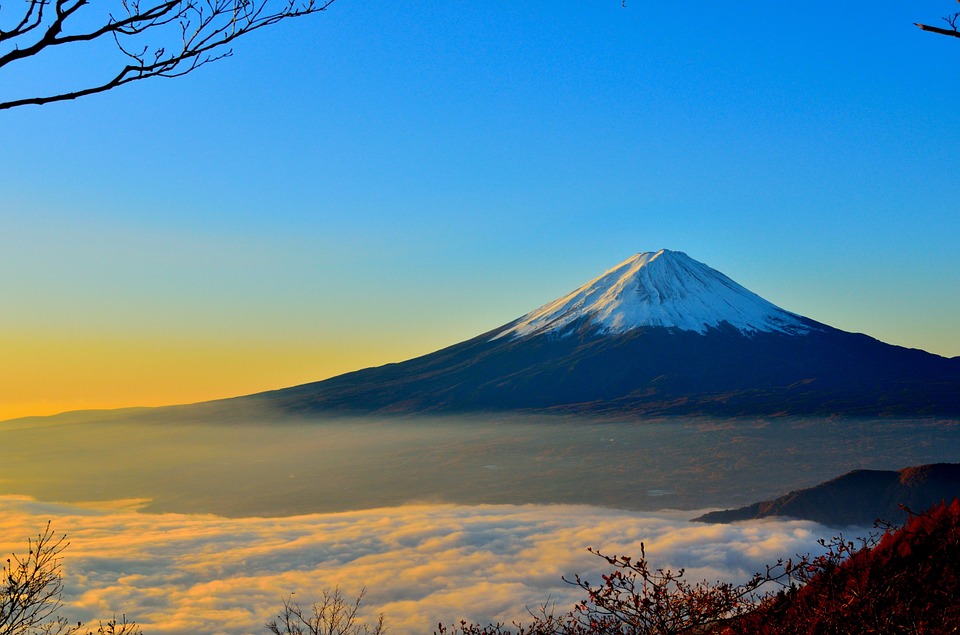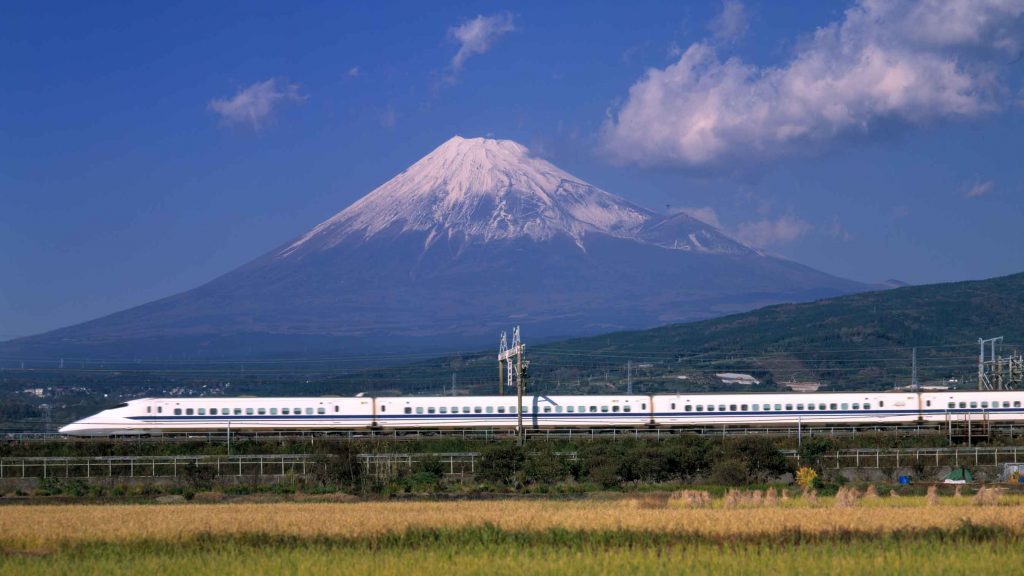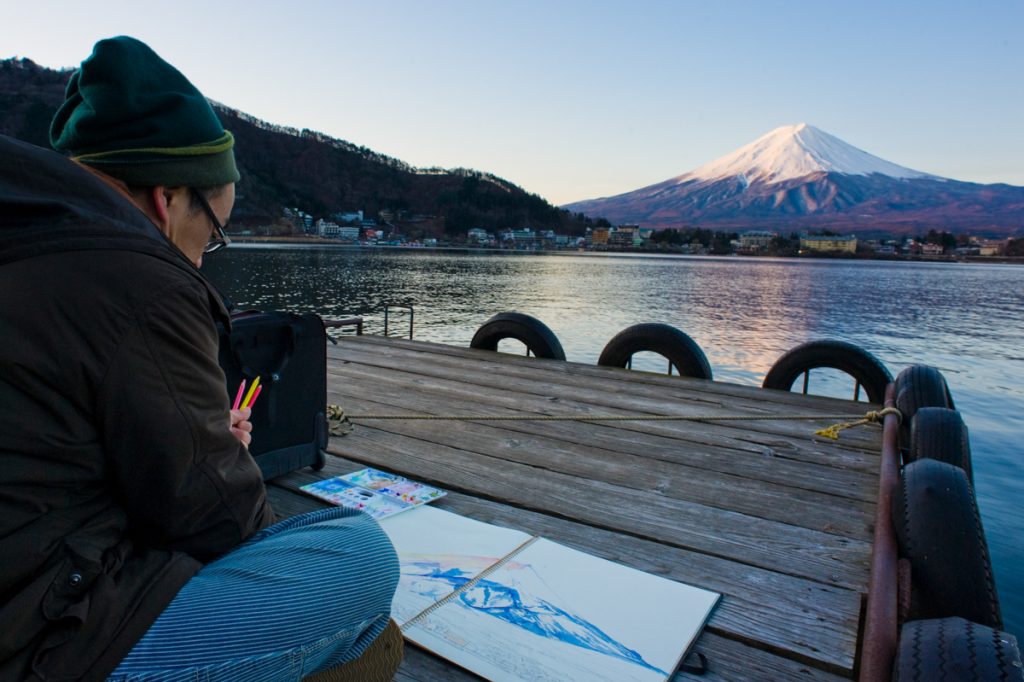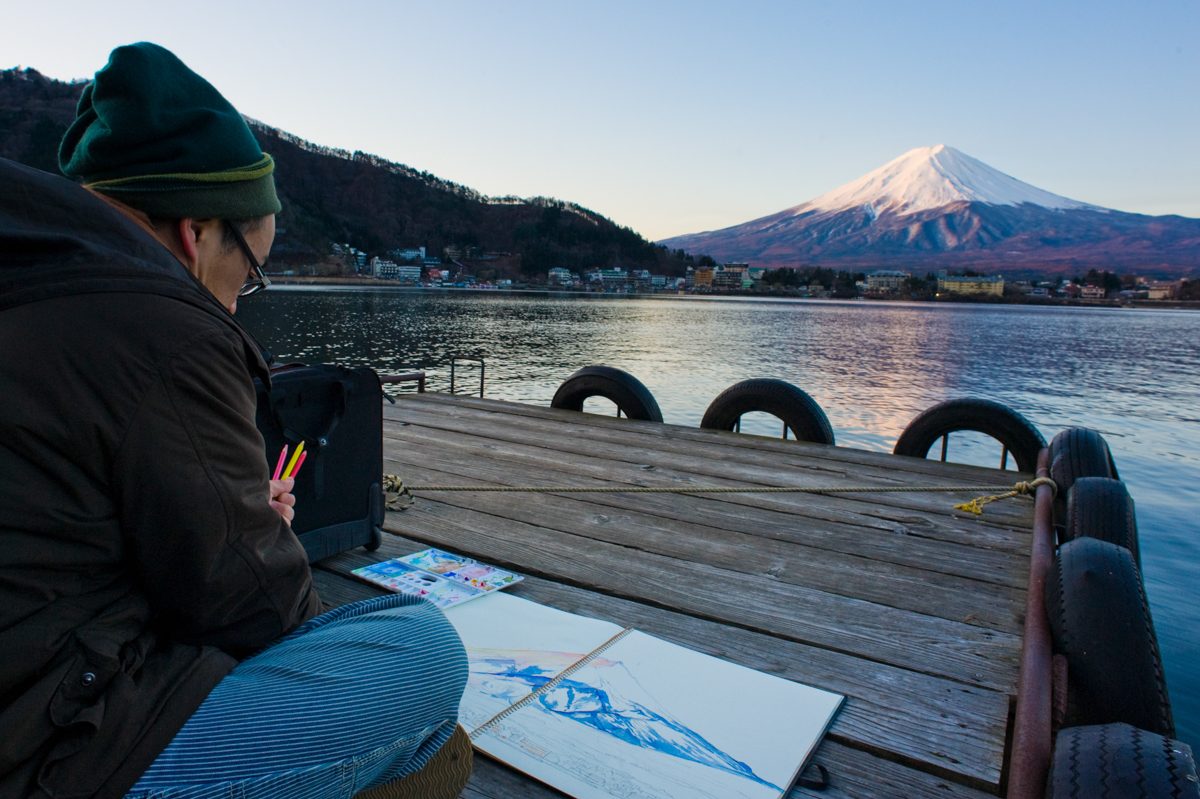A day-trip from Tokyo to Mount Fuji and the lesser-known Hakone five lakes area is among the favorite experiences of many travelers to Japan, so here is our guide on how to visit this famous landmark with the Japan Rail Pass. Whether you prefer climbing or a more relaxed pace, we have the perfect guide for you make the most out of this trip!
Let’s start with some interesting facts about Fuji-san: Mt Fuji is not only the highest mountain (3.776 meters), and Japan’s most climbed and depicted one, but it is also the pure representation of good luck and good fortune for all Japanese citizens. This is a curious fact, considering the mountain is actually a giant volcano.
Nevertheless, what is even more fascinating is that it is not a single volcano. It is part of three volcanoes, one on top of the other. The bottom one is Komitake volcano, and the second layer is Kofuji, while Fuji is the youngest of all three. Although officially classified as active, it has a very low eruption risk, since it was last active in 1708.
Interesting fact: Did you know that Mount Fuji is part of the Fuji-Hakone-Izu National Park, located less than 100 kilometers away from Japan’s capital?

Climbing Mount Fuji
All travelers eager to climb the top of Mount Fuji must bear in mind that the climbing season lasts from July until September. During summer all hiking trails are open.
In any other period, trails and mountain huts will be closed, so it can be very dangerous for anyone to attempt climbing on their own.
Also read: Mount Fuji climbing guide
To climb Mount Fuji, there are four Fuji trails, which will take you to the mountaintop:
- Yoshida trail – 2,300m (altitude of head trail)
- Subashiri trail – 2,000m
- Gotemba trail – 1,450m
- Fujinomiya trail – 2,400m
All trails can be accessed via a mountain bus, taking passengers from one of the five 5th stations (although they are all named 5th station, these are different stations), with the Fuji Subaru Line 5th Station, at Yoshida trail, being the most popular one.

Tokyo to Mount Fuji via Gotemba
Apart from the Yoshida trail, the Gotemba trail is one of the most popular routes among visitors. Travel time by train is a little over 2 hours from Tokyo. To get there:
- Take JR Tokaido line for Kozu from Tokyo Station, using your JR Pass
- Once at Kozu (Kanagawa), take the JR Gotemba Line for Numazu
- Get off at Gotemba Station | final destination

Note: The Hyperdia screenshot shows you a detailed description of a journey example with pre-selected departure time and date. Note that the train trip will be free of charge for all Japan Rail Pass holders. The displayed price is only valid for passengers with no JR pass.
Once at Gotemba station, take a bus to Subashiri 5th station, the gateway to climbing Mount Fuji. The bus operated by Fujikyu to reach the Gotemba climbing route. A one-way bus journey is about an hour long, at the cost of 1.540 yen (round trips are 2.060 yen).
Please note that Fujikyu is not part of the Japan Rail Group, which means the Japan Rail Pass does not cover buses ran by this company, and no seat reservations are available.
Note: During the climbing season, buses operate differently in comparison to the off-season. For more detailed information and timetables, please check with the local operator.
Mount Fuji from the Shinkansen trains
Summer is also the time when Mount Fuji can be clearly seen from a Shinkansen train leaving Tokyo towards Nagoya – Osaka – Kyoto. The window view is impressive – make sure to reserve your D or E seat (C or D in Green Cars), which is the right side from Tokyo, left side from Kyoto.

What to see in the Mount Fuji area
As we have already mentioned, Mount Fuji forms part of the Fuji-Hakone-Izu National Park. Hakone is one of the most popular destinations for tourists, located less than 100 km. from the capital city of Japan.
Famous for its scenic area, Ashi lake, hot springs and breathtaking views of Mount Fuji, Hakone is more than worth the visit.
Please check our new Hakone guide for more information on visiting the area.

Best time to visit Mount Fuji and its area
Also, please remember that the best time to visit any of these places is the hiking (summer) season, from July to mid-September. These are the months that promise sunshine, good weather, and fantastic views.
Unfortunately, travelers who decide to make this trip in October or March may not be able to enjoy the area’s scenery fully due to heavy rains or clouded mountain peaks.
Tokyo to Hakone with the JR Pass
Here’s how to get from Tokyo to Hakone with the bullet train:
- Take the Tokaido Shinkansen (Kodama and some Hikari trains, please check) from Tokyo Station (covered by the Japan Rail Pass)
- Get off at Odawara station
- Take the Hakone Tozan train for Hakone-Yumoto (not covered by JR)
- Get off at Hakone-Itabashi. This is your final destination.
Also very popular among the locals are Fujigoko or Fuji’s Five Lakes, which are located in the northern area of Mount Fuji.
Tokyo to Fuji Five Lakes
Kawaguchiko (or lake Kawaguchi), Saiko, Yamanakako, Shojiko, and Motosuko are the Fuji Five Lakes. Each of them offers unforgettable views and outdoor activities, including fishing, hiking, and camping. Most hotels in the area are located close to the five lakes too.

To get to the Fuji Five Lakes:
- Take the JR Chuo Line from Shinjuku Station (Tokyo) to Otsuki Station (Azusa trains, covered by the JR Pass).
- Once at Otsuki, take Fujikyu Railway to Kawaguchiko Station (not covered by the JR Pass).
Kyoto and Osaka to Hakone
Some travelers prefer to visit the area coming from the Kansai region (Osaka and Kyoto). Here’s how to get there from the west with a bullet train:
- Take the Tokaido Shinkansen (Kodama and some Hikari trains, please check) from Kyoto Station or Shin-Osaka station (covered by the Japan Rail Pass)
- Get off at Odawara station
- Take the Hakone Tozan train for Hakone-Yumoto Station (not covered by JR)
- Get off at Hakone-Itabashi Station. This is your final destination and the gateway for the Mount Fuji area.
